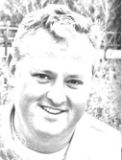Big Data Initiatives to Support Next Generation Neuroimaging of Traumatic Brain Injury (TBI)
American College of Radiology Head Injury Institute
Traumatic Brain Injury (TBI) is a major societal issue that has recently captured a progressively greater degree of public attention. TBI occurs across a spectrum of mild to severe disease with outcomes that range from transient symptoms to lifelong disability or death. The initial clinical presentation of TBI does not necessarily clearly predict outcome in all cases. As such there is an increased sense of urgency in defining the role of imaging in the management of this disease process. Realising this trend, in May 2013 the American College of Radiology (ACR) launched the Head Injury Institute (HII) to help drive progress and demonstrate leadership in head injury imaging. The HII works with TBI researchers and caregivers, leveraging and combining both science and practice information to create a shareable message for practising radiologists. The objective is to improve patient care as a broad and practical translational effort. To achieve these goals, the HII focuses on three domains:
- Standardisation: this includes standardising terminology and descriptions applied to TBI imaging, in addition to standardised clinical and scientific imaging protocols (Maas 2011);
- Knowlege sharing: this includes creating and managing information exchanges involving not only scientists but also clinicians, and
- Research to practice: facilitating and organising efforts to move research initiatives into the practice setting.
A key focus of the ACR HII is to address barriers that limit the role of imaging in patients with mild traumatic brain injury (mTBI). The vast majority of patients with head injury experience the mild form of this condition (mTBI). Though many mTBIs may be transient in nature with complete resolution of symptoms, this condition may also be associated with lifelong morbidity that includes difficulties maintaining employment and interpersonal relationships, particularly in sports or military populations with an increased environmental risk for subsequent exposures. MTBI in its uncomplicated form is defined by the lack of any observable imaging abnormalities using current clinical techniques. Although neuroimaging is of great utility in identifying moderate to severe injuries that may require acute neurosurgical or intensive care management (Kim 2011), imaging has a very limited role in helping elucidate subtle diagnostic features that may help to predict prognosis on the milder spectrum of this disease process.
Neuroimaging
Recent population-based research studies have demonstrated that advanced neuroimaging techniques may be capable of identifying the structural and functional changes that are known to occur in mTBI (Eierud 2014). These advanced techniques may include functional connectivity magnetic resonance imaging (MRI) (McDonald 2012), spectroscopy (Yeo 2011), white matter-sensitive techniques such as diffusion tensor imaging (DTI) or diffusion spectrum imaging (DSI) (Shenton 2012; grossman 2010), cortical volumetric techniques (Wang 2014), and /or positron emission tomography (PET) molecular imaging using TBI-specific ligands (Ramlackhansingh 2011).
These advanced neuroimaging techniques are presently used to detect statistically meaningful differences in scientific exploration, but are of limited use in helping to inform the real-time clinical management of patients with TBI. Although many of these techniques can be acquired using current clinical scanners, the abnormal signal reflective of mTBI is often diffuse and difficult, if not impossible, for a neuroradiologist to qualitatively describe. Discernible changes from normal on imaging studies often can only be revealed using quantitative, computer assisted techniques. However, validated quantitative diagnostic tools to interpret advanced neuroimaging techniques and achieve a diagnosis of mTBI within a single patient do not exist. In many cases, the lack of ‘normal’ comparison values that are readily measurable on clinical scanners further impedes the implementation of advanced imaging tools.
The ACR HII recognises that the future of neuroimaging for mTBI will likely require some combination of computer-aided diagnosis (CAD) and qualitative interpretation by a practising radiologist. Therefore the HII is actively involved with helping to bridge the gap between the prevailing clinical neuroimaging of TBI and the
disruptive potential of advanced neuroimaging for the management of this disease condition. Through multiple ACR-supported conferences that have assembled many of the thought leaders and policymakers in the neuroimaging of TBI, a pathway forward has been defined which includes:
(i) Collection and aggregation of large-scale data from TBI clinical trials and from age-stratified normal controls employing standardised techniques and standardisation between imaging equipment;
(ii) Identification of clear imaging features that are diagnostic for TBI and demonstrate value in assessing injury severity and outcomes, and
(iii) Development of practical imagebased tools and the requisite statistical framework to determine a diagnosis and prognosis for individual patients with TBI. This final goal may include the use of such contemporary tools as machine-learning algorithms that can learn from large volumes of patient data where such knowledge is encapsulated in statistical classification/ regression models, which can then be used for TBI prediction in individual patients (see Figure 1).
Figure 1
Data Archive and Research Toolkit
The ACR HII acknowledges that to realise these ambitious goals, “big data” initiatives are required, and the Data Archive and Research Toolkit (DART) was developed in response to this. DART is both an IT infrastructure and analysis platform. It was built to support clinical researchers (internal and external) from a central point permitting access, query, visualisation, and analysis. DART was configured to provide data querying and access with sufficient flexibility and range to allow for a variety of researcher needs. DART empowers researchers to create harmonised datasets, perform analyses and develop algorithms which can be ‘published’ and shared with other researchers. DART is designed to be adaptive, serving as a multi-source research data warehouse that eases cross-trial, cross-discipline research specifically designed to promote the discovery and elucidation of biomarkers and clinical patterns (see Figure 2).
 Figure 2
Figure 2DART evolved from an ACR legacy Clinical Data Warehouse. DART’s predecessor was an archive of clinical images and associated clinical data collected utilising ACR’s TRIAD (Transfer of Images and Data) software. DART goes beyond the capabilities of the Clinical Data Warehouse, and supports new classes of research data extending well outside the traditional imaging range. Such additional data found in DART includes digital pathology images, bio-specimen/biorepository information and operational research reports. With TRIAD as the data transfer component, the DART ecosystem is able to handle specialised work flow and requirements, including de-identification, integration with other clinical trial systems, flexible access and robust and highly customised federated searches.
DART’s architecture includes a streamlined tool-building environment that encourages researchers to create harmonised datasets from clinical data, and to also perform post-processing of images in a transparent and consistent manner. The DART-supported tools will allow for assessing complex data sets via a group of specialised software, generally third-party packages, but may also include custom programs. Examples of third-party packages supported by DART include quantitative computational methods such as cortical thickness heterogeneity measurement. Given the germinal nature of much of the related research and development efforts to date, both the lack of universally accepted algorithms and critical pre-processing components are strong deterrents to the widespread use of these algorithms.
As a corrective measure, DART tools will significantly ease the use of established and well-vetted imaging pipelines. Common pipeline elements for structural (eg T1-weighted) MRI include inhomogeneity correction (Tustison 2010), brain extraction (or skull stripping), prior-based n-tissue segmentation (Avants 2011) and cortical thickness estimation ( Tustison 2014). Diffusion-weighted measures provided as part of the DART framework include mean diffusivity (MD), fractional anisotropy (FA), axial diffusivity (AD), and radial diffusivity (RD) maps with the potential inclusion of additional modalities. An additional benefit to the average researcher is that these pipelines have been tuned by knowledgeable developers in terms of the governing parameters, which are known to affect performance and quality of results, but are often omitted in traditional publishing venues (Tustison 2013). DART will include these processing parameters as part of the metadata. The ability to use complex pre-processing and processing algorithms, in addition to building a platform for comparison to ‘normal’ data, will greatly expedite the use of these important techniques in clinical practice.
This DART platform may serve to aid the convergence and utility of open science elements in a mutually beneficial way. The cloud-based environment will provide a platform for storage of image data and will facilitate method-driven contributions from developers. These efforts should enable cross-availability, ie cutting-edge processing methods, to neuroscientists and a large-scale vetting platform for developers.
TBI has a relatively heterogeneous imaging signature (Eierud 2014), which complicates tailored strategies for individualised disease characterisation. Thus a “ big data” approach is key for the development of clinically useful tools whereby multimodality imaging features (Van Horn 2014), generated from DART processing, are supplemented by clinical and neuropsychological data from large cohorts demonstrating a range of TBI diagnoses. These large feature-sets can then be used as input to powerful machine learning techniques (eg support vector machines, random forests, neural networks), which generate diagnostic models for determining clinically relevant parameters (Lui 2014). Not only is it possible to use these models for predicting individual TBI classification or regression, but certain machine learning techniques can be used to provide feedback as to which details are most relevant for the diagnostic task thus potentially providing new research avenues for further exploration.
Conclusion
Utilising the above roadmap, it is hoped the coming years yield a comprehensive quantitative description of the imaging aspects of TBI, particularly mTBI, that span injury severity and multiple imaging modalities by capitalising on large scale TBI and population- based normal datasets. It is believed these key data will inform advanced analytical tools that may serve as a core for next generation clinical computational platforms to diagnose this condition. Development of this capability will provide leading edge, powerful tools to clinicians caring for patients suffering from TBI. This platform, built on shared understanding and learning, could ultimately provide an objective tool for measurement of a patient’s present disease state and prognosis. The objective measurement tools in neuroimaging facilitated by this effort will prove to be a critical component in the development of large-scale individualised treatment programmes for TBI.
Avants BB, Tustison NJ, Wu J et al. (2011) An open source multivariate framework for n-tissue segmentation with evaluation on public data. Neuroinformatics, 9(4): 381-400.
Eierud C, Craddock RC, Fletcher S et al. (2014) Neuroimaging after mild traumatic brain injury: review and meta-analysis. Neuroimage Clin, 4: 283-94.
Grossman E, Inglese M, Bammer R (2010) Mild traumatic brain injury: is diffusion imaging ready for primetime in forensic medicine? Top Magn Reson Imaging, 21(6): 379-86.
Kim JJ, Gean AD (2011) Imaging for the diagnosis and management of traumatic brain injury. Neurotherapeutics, 8(1): 39-53.
Lui YW, Xue Y, Kenul D et al. (2014) Classification algorithms using multiple MRI features in mild traumatic brain injury. Neurology, 83(14): 1235-40. Maas AI, Harrison-Felix CL, Menon D et al. (2011) Standardizing data collection in traumatic brain injury. J Neurotrauma, 28(2): 177-87.
McDonald BS, Saykin AJ, McAllister TW (2012) Functional MRI of mild traumatic brain injury (mTBI): progress and perspectives from the first decade of studies. Brain Imaging Behav, 6(2): 193-207.
Ramlackhansingh AF, Brooks DJ, Greenwood RJ et al. (2011) Inflammation after trauma: microglial activation and traumatic brain injury. Ann Neurol, 70(3): 374-83.
Shenton ME, Hamoda HM, Schneiderman JS et al. (2012) A review of magnetic resonance imaging and diffusion tensor imaging findings in mild traumatic brain injury. Brain Imaging Behav, 6(2): 137-92.
Tustison NJ, Johnson HJ, Rohlfing T et al. (2013) Instrumentation bias in the use and evaluation of scientific software: recommendations for reproducible practices in the computational sciences. Front Neurosci, 7: 162.
Tustison NJ, Cook PA, Klein A et al. (2014) Largescale evaluation of ANTs and FreeSurfer cortical thickness measurements. Neuroimage, 99: 166-79. Tustison NJ, Avants BB, Cook PA et al. (2010) N4ITK: improved N3 bias correction. IEEE Trans Med Imaging, 29(6): 1310-20.
Van Horn JD, Toga AW (2014). Human neuroimaging as a “Big Data” science. Brain Imaging Behav, 8(2): 323-331.
Wang X, Xie H, Cotton AS et al. (2014) Early cortical thickness change after mild traumatic brain injury following motor vehicle collision. J Neurotrauma, 32(7): 455-63.
Yeo RA, Gasparovic C, Merideth F et al. (2011) A longitudinal proton magnetic resonance spectroscopy study of mild traumatic brain injury. J Neurotrauma, 28(1): 1-11. RefeRenCeS




















